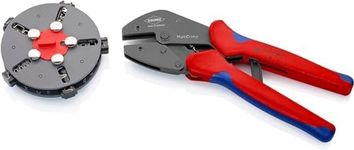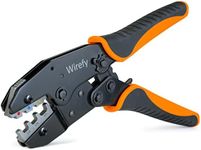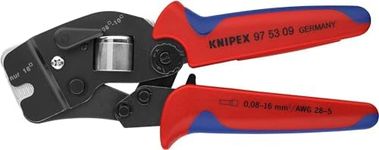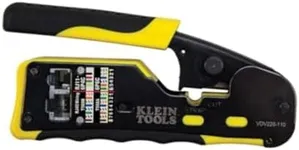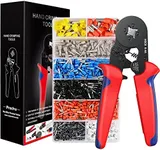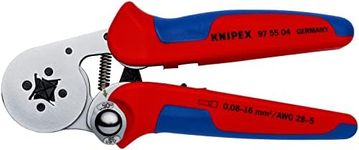Buying Guide for the Best Wire Crimpers
Choosing the right wire crimpers is essential for ensuring secure and reliable electrical connections. Wire crimpers are tools used to join two pieces of metal by deforming one or both of them to hold each other. The right crimper can make your work easier, more efficient, and result in a better-quality connection. When selecting wire crimpers, consider the type of work you will be doing, the types of connectors you will be using, and the frequency of use. Here are some key specifications to consider when choosing wire crimpers.Type of CrimperWire crimpers come in various types, including manual, ratcheting, and hydraulic. Manual crimpers are simple and suitable for occasional use or small projects. Ratcheting crimpers provide a more consistent crimp and are easier to use for repetitive tasks, making them ideal for medium to heavy-duty work. Hydraulic crimpers are used for heavy-duty applications and can handle larger wires and connectors. Choose the type based on the volume and intensity of your work.
Wire Gauge CompatibilityWire gauge compatibility refers to the range of wire sizes that the crimper can handle. This is important because using the wrong size crimper can result in poor connections. Wire gauges are typically measured in AWG (American Wire Gauge). Crimpers usually specify the range of wire gauges they are compatible with, such as 10-22 AWG. Ensure that the crimper you choose matches the wire sizes you will be working with. For general use, a crimper with a wide range of compatibility is ideal.
Connector Type CompatibilityDifferent crimpers are designed to work with specific types of connectors, such as insulated, non-insulated, coaxial, or modular connectors. It is important to choose a crimper that is compatible with the connectors you will be using. For example, if you are working with insulated terminals, ensure the crimper is designed for insulated connectors. This ensures a secure and reliable connection.
Crimping ForceCrimping force refers to the amount of pressure the crimper applies to the connector and wire. This is important because insufficient force can result in a weak connection, while too much force can damage the wire or connector. Manual crimpers rely on hand strength, while ratcheting and hydraulic crimpers provide more consistent force. Consider the type of work and the materials you will be crimping to determine the appropriate crimping force needed.
ErgonomicsErgonomics refers to how comfortable and easy the crimper is to use. This is important, especially if you will be using the tool for extended periods. Look for crimpers with comfortable handles, a good grip, and a design that reduces hand fatigue. Ergonomic crimpers can improve efficiency and reduce the risk of injury.
DurabilityDurability refers to the crimper's ability to withstand regular use without breaking or wearing out. This is important for ensuring the tool's longevity and reliability. Look for crimpers made from high-quality materials, such as hardened steel, and those with a good reputation for durability. A durable crimper will save you money in the long run and provide consistent performance.

